HOLLY RIDDLE

Foodies recognize Carla Hall's face from a range of fan-favorite cooking and cooking competition shows. After appearing on "Top Chef," Hall went on to co-host on "The Chew" and Food Network's "Worst Cooks in America." She's also a judge on Food Network's "Baking Championship" series. Most recently, though, Hall has thrown her culinary expertise and influence behind a very important cause: saving the bees.
Carla Hall's Favorite Summer Eats And Tips For Cooking With Honey - Exclusive Interview
lev radin/Shutterstock
BY HOLLY RIDDLE/AUG. 18, 2023 8:09 AM EST
Foodies recognize Carla Hall's face from a range of fan-favorite cooking and cooking competition shows. After appearing on "Top Chef," Hall went on to co-host on "The Chew" and Food Network's "Worst Cooks in America." She's also a judge on Food Network's "Baking Championship" series. Most recently, though, Hall has thrown her culinary expertise and influence behind a very important cause: saving the bees.
58.4K
Big Mistakes Everyone Makes When Cooking With A Waffle Iron
This year, Hall is the National Honey Board's honey ambassador, which is keeping her busy (as a bee, one might say) educating the public on the board's Honey Saves Hives program and how eating more honey can help save the bees. Tasting Table caught up with Hall recently to talk all things honey and the biggest mistakes you're making when cooking and baking with honey. However, we're not just talking about the sweet stuff. Hall also told us about her end-of-summer favorite foods and about a few surprising foods she recommends you throw on the grill and yes, they're seriously unexpected.
Saving the bees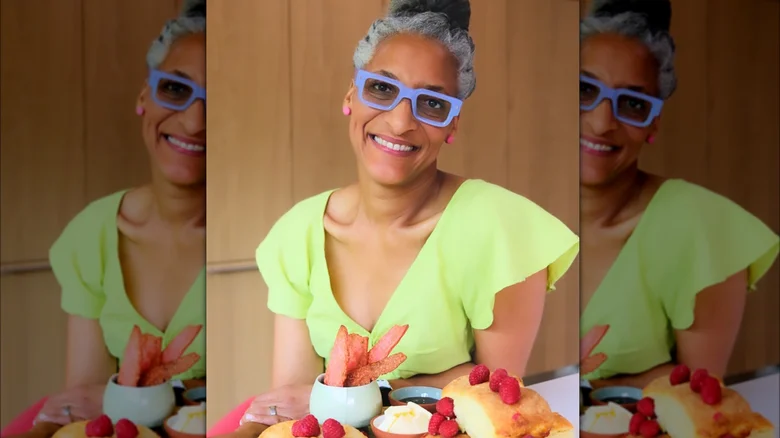
Tell us more about the Honey Saves Hives program. How did you get involved, and why was it something you wanted to be a part of?For me, as a chef and a born teacher, it's [about raising] awareness. The National Honey Board is doing this campaign to raise awareness for these little mighty creatures, these bees.
I keep [thinking about] when I was in Greece. There were so many bees ... I was like, "Oh my god. Why do we have so many bees?" I wasn't even thinking of pollinating and what bees do. We spend so much time in this country trying to be comfortable as humans and killing the things that are helping our food and helping pollinate that food. It's about rethinking and re-imagining what we can do for these little honeybees. We have to save their lives.
Looking at this cause from a culinary perspective, why is this something that home cooks should care about?They should think about honey as an ingredient. I happen to love honey. I will choose honey over maple syrup any day for my pancakes and every time you buy a product with honey in it, you are helping the bees. It is a passive way to help the lives of bees.
Using more honey in the kitchen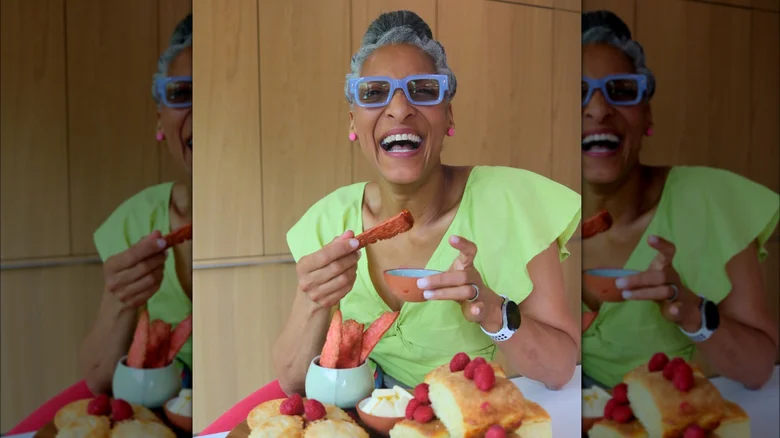
What are your tips and tricks for using honey more in the kitchen?
You have to know that you can't [substitute honey for sugar] one-for-one. You can't [swap] equal parts honey and sugar. You have to reduce the honey by half a cup. You also have to use extra baking soda to balance out the pH. Those little bubbles in the baking soda will help raise your baked goods [against] the weight of the honey.
Then, you have to lower the temperature of the oven by 25 degrees. If you've ever tried to make honey muffins, and they're so dark ... it's because the honey will burn because you're adding this inverted sugar. There's a lot of science involved, but there are very simple techniques to help you [achieve] a successful product.
I also like to use honey especially buckwheat honey in marinades and dressings, because [buckwheat honey] reminds me of a deeper molasses with that deeper flavor. It's not as sweet. Those bitter notes pair well with citrus. They pair well with spice.
Lately, I've had this bottle of honey on my kitchen counter that I've been putting in everything. I do a hot sauce vinaigrette. I do a barbecue sauce that's super easy, with citrus and ketchup and garlic powder and onion powder, salt and pepper. Just throw it together you don't even need a recipe.
One of the things that I love about honey [is that] it's all about the taste of that particular honey, so I encourage people to put some [honey in their recipes] and then taste it. Then [they can say], "Oh, this is great," or "I need a little more bitter," or "I need a little more acid," or "I need a little more salt."
Not being able to swap out the honey for sugar one-for-one does that just apply to baking, or is that for cooking, too?That's for baking. In baking, you would [also] reduce any liquid that you have by a quarter cup per each cup of honey used, because honey is a liquid. You don't want to add more liquid.
But in terms of a marinade or something like that, it's about taste. Usually, in those marinades, you're not adding sugar. You're adding some other kind of liquid.
Would you say that's the biggest mistake people make when they're trying to use more honey in their baking getting their ratios wrong and then ending up with that baked item that's not the way it's supposed to be?Yes. The texture is wrong because it's too much liquid. Also, the color is off because the heat is too high, or they haven't added enough raising agents so the baking soda.
Buy local Are there any particular varieties of honey that you recommend, either from a cooking perspective or an environmental perspective?
Are there any particular varieties of honey that you recommend, either from a cooking perspective or an environmental perspective?The bees are going to be helped regardless of the product, but I like to buy local honey. When I go to a farmer's market, I want the local honey. If I'm visiting a place, I want the local honey.
I remember being in South Carolina ... and they were like, "This is our local honey," and it tasted like sweet grass because that's where the bees were pollinating. [This honey] feels like I'm traveling. It is a taste in time. It's time traveling, but with the honey. I'm bringing back a piece of that trip with me with the honey. This is a very light honey, but [it's from] the spring. I found out that in the fall, it's very different; it's a little darker this is [from] talking to the beekeepers. So I make sure that I order [the honey] in the spring and I order in the fall because the honey will change.
When you think about the relationships that the bees naturally have with the environment, nothing is static. You can't say, "I want this honey all the time," because the bees are traveling and they are pollinating the flowers that are in season at the time.
For people who want to specifically do some end-of-summer barbecuing, what are some of the honey-based sauces that you like to use? What would you recommend?You can make a quick barbecue sauce. Ketchup is the base of my barbecue sauce: ketchup, apple cider vinegar, and then I'll add citrus, like orange juice and lemon. To that, I'm adding honey because the honey caramelizes so nicely. The tip there is to not put it on too soon. You need to cook your meat, because as soon as you put the sweet sauce on, it's going to start to brown, and you don't want it to brown and char before the meat is actually cooked.
Another thing that I love to make is a hot sauce vinaigrette. I love condiments. Condiments are your friend ketchup, mustard, mayo. In this hot sauce vinaigrette, I use hot sauce, yellow mustard, honey, a little bit of vinegar, and salt and pepper. I [use that to] dress my salads. I love grilled romaine. I loved grilled radicchio and grilled vegetables, and I put this over it. It's also good with grilled fish.
What about honey-based cocktails? What's your preference there?I don't drink alcohol, so I have a ginger-honey mocktail. I put a little bit of spice in it because the spice mimics the burn that you get from alcohol. It is ginger, lime juice, honey, chile flakes, and seltzer water. I use a lighter honey the buckwheat [honey] would be too strong. I finish it with ice and seltzer water. It's also great with a little bit of mint. If you want to put vodka in it, you could.
Bringing the heat into the kitchen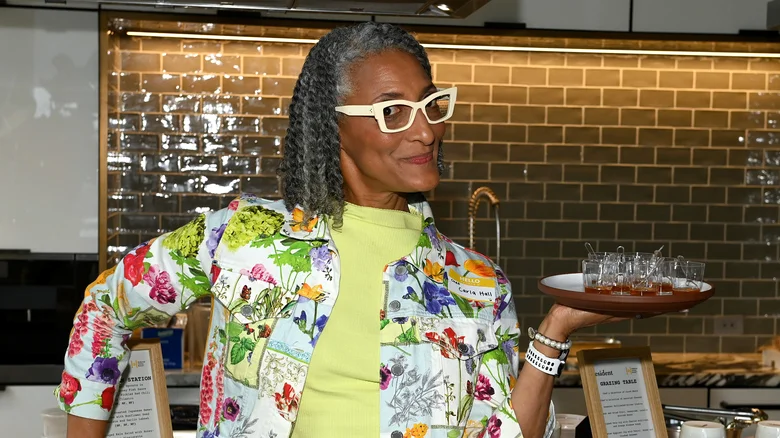 You just wrapped up the "Summer Baking Championship" over on Food Network, and one of the winning creations was a chocolate chile cake. How do you personally incorporate heat into your summer desserts?
You just wrapped up the "Summer Baking Championship" over on Food Network, and one of the winning creations was a chocolate chile cake. How do you personally incorporate heat into your summer desserts?I love peaches and chile. I love cherries with a little bit of jalapeρo.
One of the things that I do when I'm grilling is make these packets. Whenever you get the fire going and it's all perfect, right at the end you're like, "Oh, shoot, the fire is really perfect and I don't have anything else to cook," I put the fruits cut up, or the cherries pitted and whole into a foil packet with a little bit honey, sugar, [or] agave and cornstarch. You mix that up and put it on your fire, that packet ... That starts to cook, and that becomes the perfect topping for ice cream, for grilled pound cake but I love the chiles. I love chiles and fruit.
What are your thoughts on the changes that "Top Chef" has made in bringing Kristen Kish on?I just had a meeting with [production company] Magical Elves. I walked in and said, "You got it right." It is such a perfect, perfect selection. They absolutely got it right. I said, "You get a blue ribbon for this pick."
Not a single person's going to say Kristen isn't perfect for it. She's a great host. Padma [Lakshmi] handed the baton to another woman who's also from "Top Chef." She's done other shows, she's a perfect host, and she's fun and capable and an amazing chef. They got it right.
What you need to eat before summer ends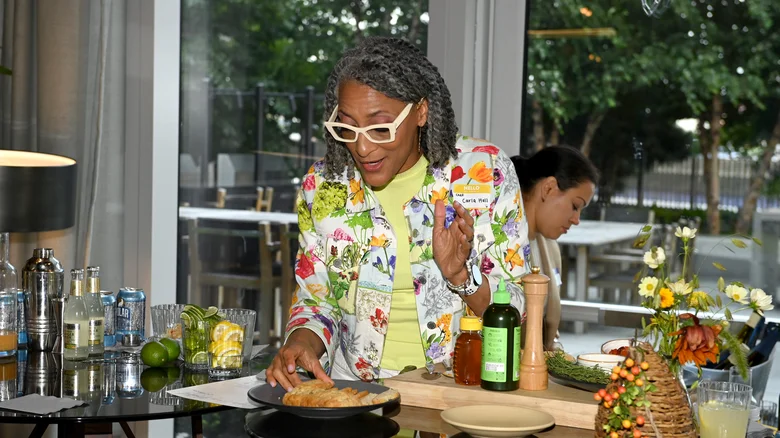 We're getting close to the end of summer. What do you have to have before the season ends? What are your favorite seasonal dishes?
We're getting close to the end of summer. What do you have to have before the season ends? What are your favorite seasonal dishes?You've got to get those tomatoes. One of my favorite things [is] cutting up the tomatoes and putting salt on them, letting them drain ... You take the tomatoes and cheese with the hot sauce [that] you make in olive oil. You make this beautiful sauce with those tomatoes and a little bit of red wine vinegar and salt. Then, you get the juice, which you're going to use for a vinaigrette, but the tomatoes are going to be tossed with hot pasta and cheese and basil. It is one of the simplest and most delicious dishes for late summer tomatoes.
I also love corn. Did you know that every piece of corn silk attaches to a corn kernel? When you cut off the bottom of the corn, not the top with the little frilly-frills, but you cut the bottom off ... You can put it in the microwave for a few minutes, and then you can shake the corn out by holding the corn silk. It comes out perfectly with all the corn silk off.
Then, you can lay your corn down and cut straight down so all that corn is not flying all over the place. You get these beautiful, big pieces of corn, like eight kernels, and you pop it in your mouth. It's so sweet. It's great for a salad.
So corn and tomatoes those are my go-to's at the end of summer.
Are there any seasonal ingredients or dishes that you feel are underrated?This isn't seasonal because you have it all the time it's celery. Grilled celery and celery, period, is underrated as an ingredient. People put it in sauces; they put it in things like stews and mirepoix; but as an ingredient, it is underutilized.
Grilling it changes things if you want to put it in something, but also with cheese on it, with hummus, grilled celery, and toasted nuts; tossed with butter with a little bit of salt; together with an apple and some cheese in a salad oh my god. It is delicious.
If someone wants to grill their celery, what would they do?First of all, you're going to take the top off. [Take] a little knife and pull the strings down so you get all those strings off the celery. You can do that from the bottom or the top, but it's taking a little bit and then pulling it down with a pairing knife to get the strings off.
Then, you're going to rub it in olive oil and then throw it on the grill. You can cut it into pieces. You can cut the stalks in half or in thirds and throw them on the grill, and it starts to char. It gets a little bit translucent around the edges, and then you'll know that it's cooking. You don't have to cook it until it's completely soft. It still has texture, but that smokiness completely changes it, and it is delicious.
An egg salad tip that makes all the difference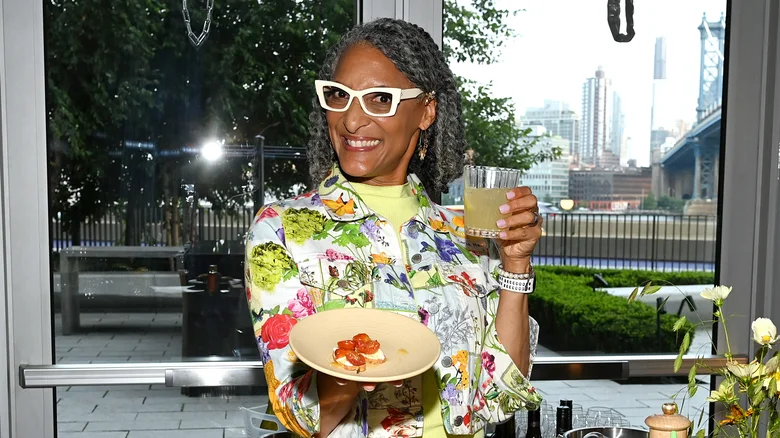 You made a recent Instagram post about making egg salad, where you advised tearing the egg whites instead of chopping them up. Why does that tip make such a big difference?
You made a recent Instagram post about making egg salad, where you advised tearing the egg whites instead of chopping them up. Why does that tip make such a big difference?When you tear [the eggs], the edges aren't straight. By tearing them, the sauce the mayonnaise and the egg yolks fills that in. It feels very different in your mouth. The yolks are creamier ... The distribution of the yolk coats the irregular edges of the whites and gives you this beautiful, silky texture. It's amazing.
This is from Nancy Silverton. She was on "The Chew" years ago. She tore this egg salad, and I've been doing it the same way ever since. It's amazing how creamy and different it is.
You made a similar post on grilling vegetables and fruits, and you included figs which, like celery, isn't something that you would normally think to throw on the grill. For someone who wants to do that, what would you recommend?For figs because oftentimes, they can be really soft I would put them in [a grill basket]. Put olive oil on them, a little bit of salt. The grill basket is great so they don't stick. If you don't have a grill basket, take a piece of heavy foil, poke holes in it, spray that foil, and place your figs on that. They don't stick because they're nice and soft, and you're still going to get that smokiness.
Figs are one of the things that I don't love, so I'm always treating them with something. Figs to me are what celery is to other people, but I love them grilled, slightly pudding-like in the center, with a little bit of char.
Source: lev radin/Shutterstock
Original content:
https://www.tastingtable.com/1368445/carla-hall-favorite-summer-eats-tips-cooking-honey-interview/